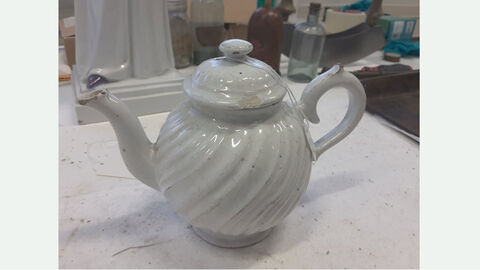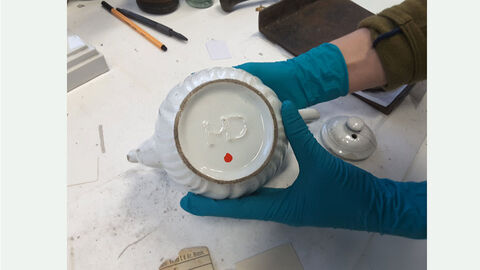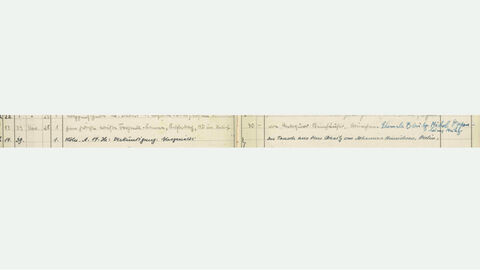The lawyer Michel Oppenheim (1885–1963) was employed by the City of Mainz until the latter forcibly retired him in 1934. As a Jew, Oppenheim was subsequently subjected to further persecution by the National Socialist regime. In the summer of 1937, the City of Mainz gave the Oppenheim family notice to quit the apartment they rented in the Goldenluftgasse. Forced to move into a smaller apartment, the passionate collector of ceramics saw himself faced by an insurmountable problem: where was he now to house his extensive collection of Höchst porcelain, faience, and other antiquities?
He decided he had no choice but to sell off some items, including 65 faience objects. Through the mediation of his friend Kurt Röder (1881– 1943), Director of the Grand Ducal Porcelain Collection in Darmstadt, he succeeded in finding a buyer in the Seilers, a married couple from Cologne. The Seilers paid Oppenheim a low price, for as it turned out they were interested only in one particular faience jug made in Frankfurt and not in the collection as a whole. Shortly after acquiring the collection, the Seilers sold 63 of the 65 faience objects to the Munich antique dealer Ludwig Steinhauser (ca. 1878–after 1952), a well-known ceramics dealer. In November 1939, the Hessisches Landesmuseum Darmstadt acquired from Steinhauser an 18th century teapot made in the Kelsterbach manufactory for its collection.


